Simulation Standard
Silvaco面向半导体工艺和器件仿真工程师推出的技术刊物
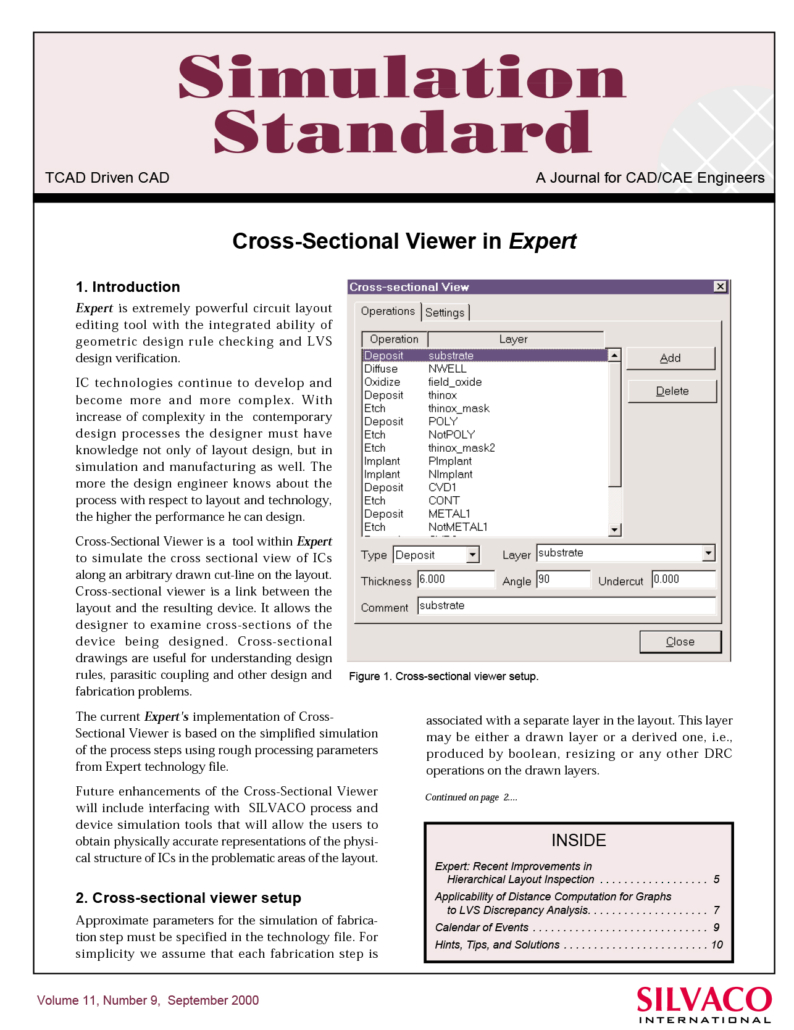
Cross-Sectional Viewer in Expert
Cross-Sectional Viewer is a tool within Expert to simulate the cross sectional view of ICs along an arbitrary drawn cut-line on the layout. Cross-sectional Viewer is a link between the layout and the resulting device. It allows the designer to examine cross-sections of the device being designed. Cross-sectional drawings are useful for understanding design rules, parasitic coupling and other design and fabrication problems.
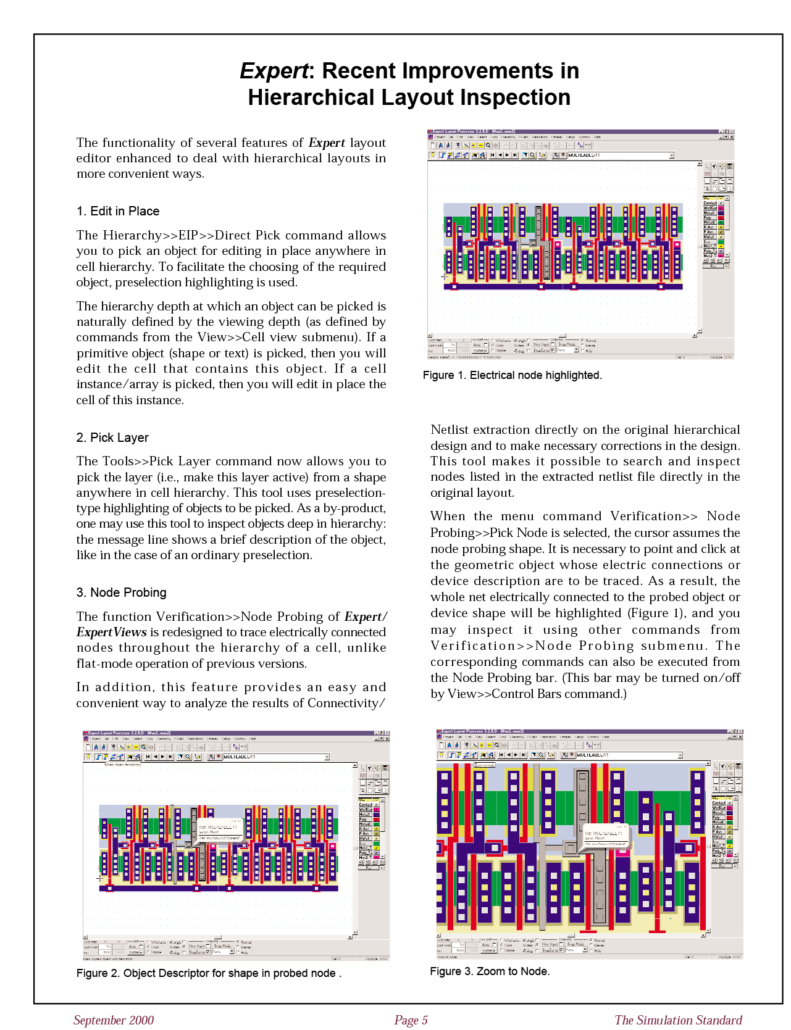
Expert: Recent Improvements in Hierarchical Layout Inspection
The functionality of several features of Expert layout editor has been enhanced to deal with hierarchical layouts in more convenient ways.
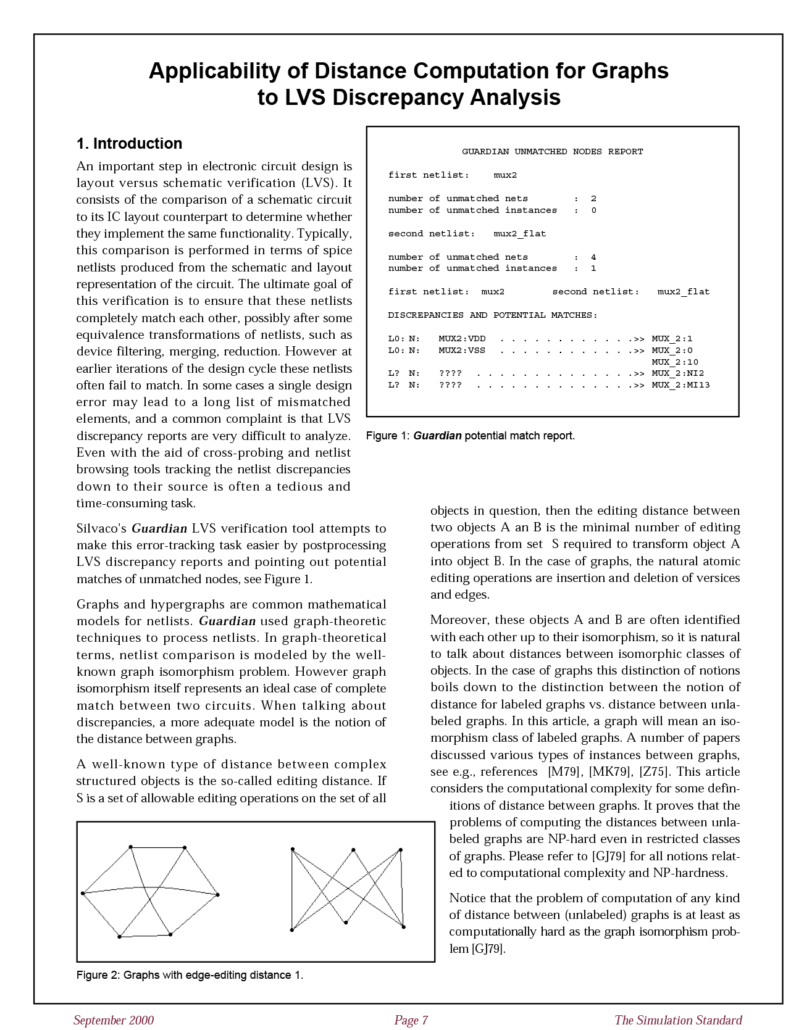
Applicability of Distance Computation for Graphs to LVS Discrepancy Analysis
An important step in electronic circuit design is layout versus schematic verification (LVS)
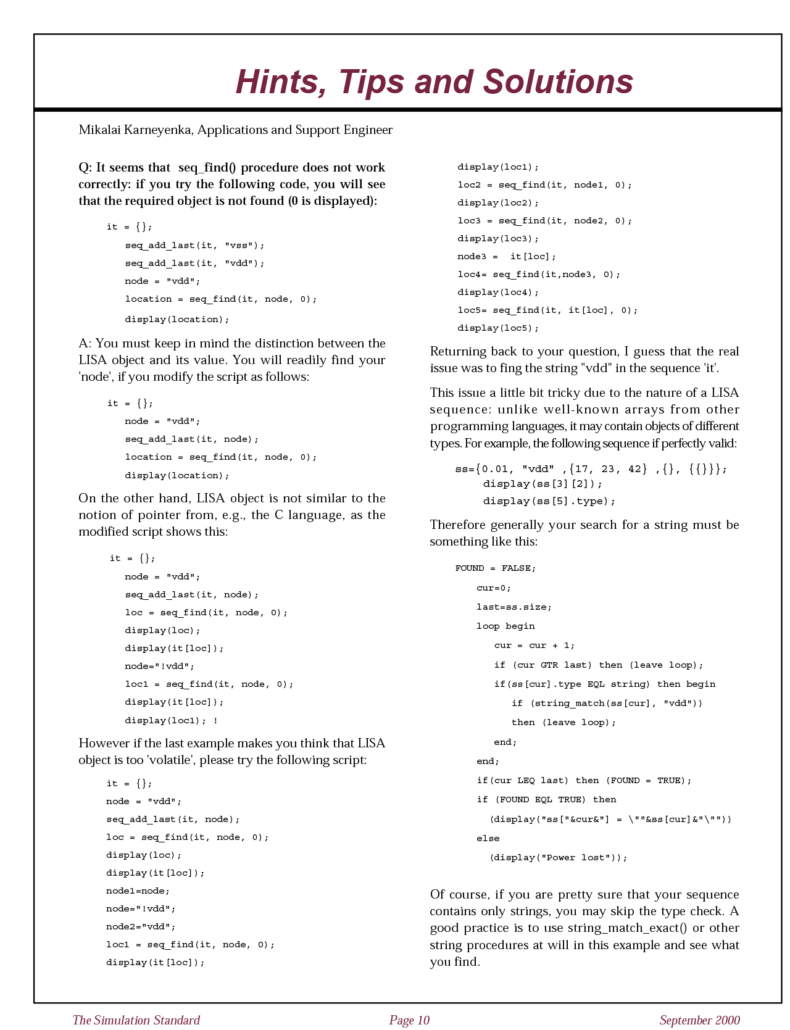
Expert Hints, Tips, and Solutions: Object Scripting, Layer Color Palette, Big Measurements
Q: Often I need to measure big objects. It order to position the ruler precisely I must zoom in at one end, zoom out that zoom again in at the other end. Is it possible too make this operation more convenient? For example, can I start the measurement in one window and finish it in another one?
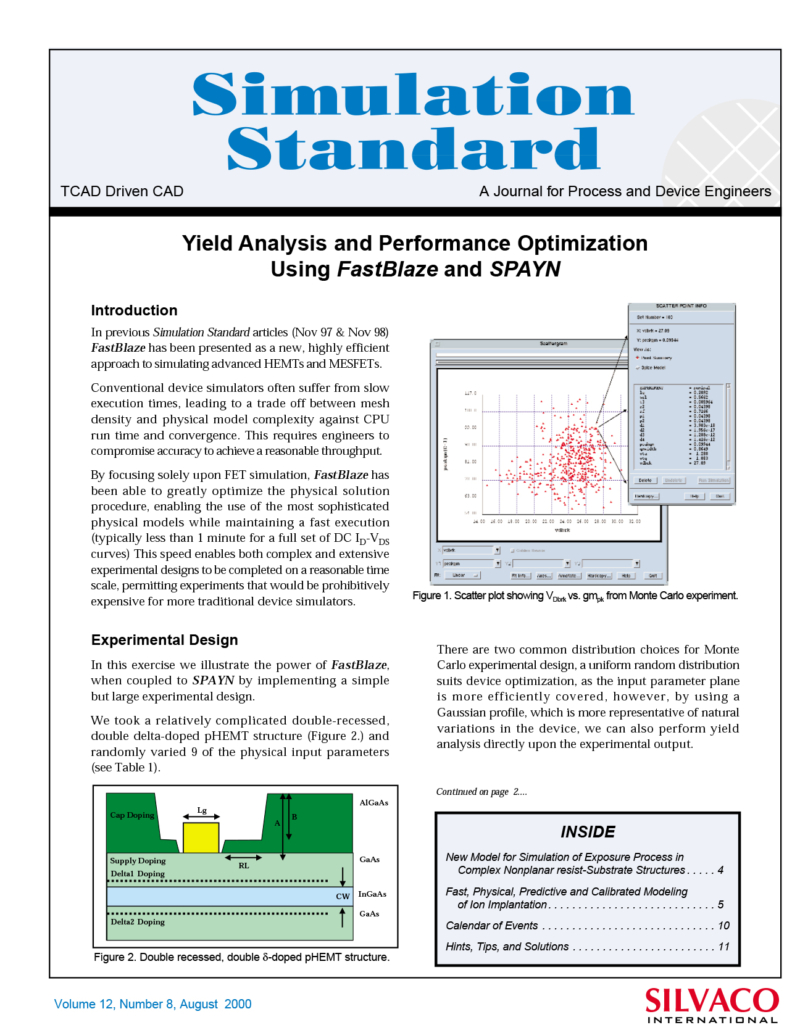
Yield Analysis and Performance Optimization Using FastBlaze and SPAYN
In previous Simulation Standard articles (Nov 97 & Nov 98) FastBlaze has been presented as a new, highly efficient approach to simulating advanced HEMTs and MESFETs. Conventional device simulators often suffer from slow execution times, leading to a trade off between mesh density and physical model complexity against CPU run time and convergence. This requires engineers to compromise accuracy to achieve a reasonable throughput.
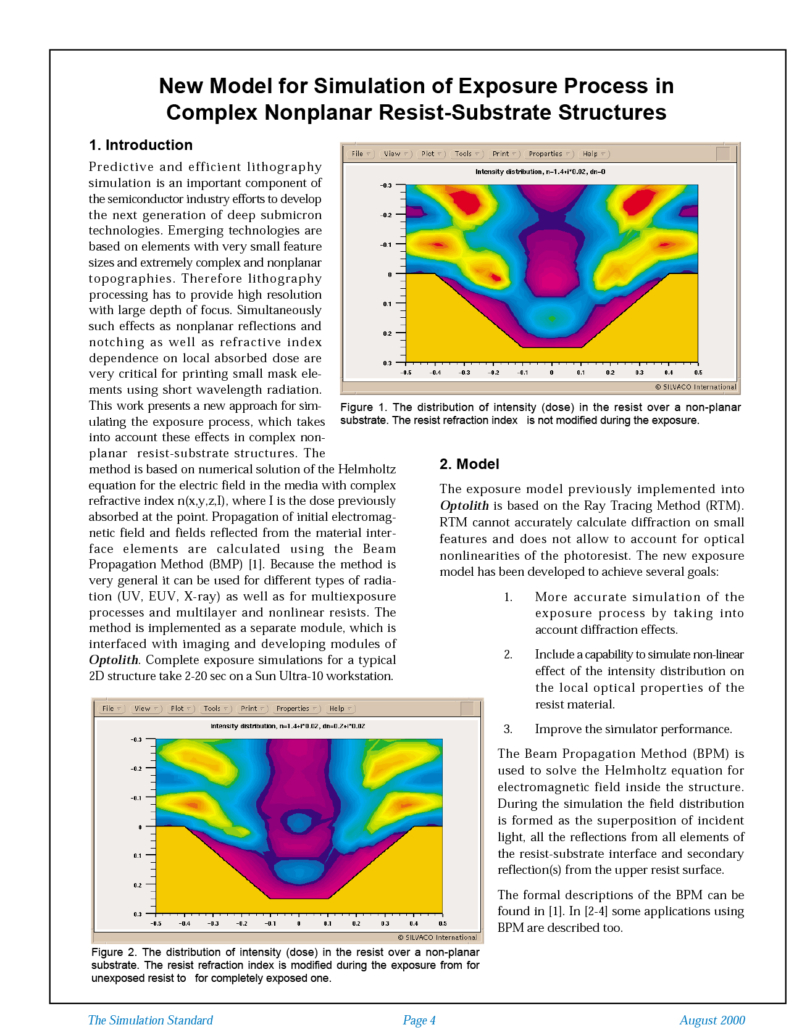
New Model for Simulation of Exposure Process in Complex Nonplanar Resist-Substrate Structures
Predictive and efficient lithography simulation is an important component of the semiconductor industry efforts to develop the next generation of deep submicron technologies. Emerging technologies are based on elements with very small feature sizes and extremely complex and nonplanar topographies. Therefore lithography processing has to provide high resolution with large depth of focus. Simultaneously such effects as nonplanar reflections and notching as well as refractive index dependence on local absorbed dose are very critical for printing small mask elements using short wavelength radiation. This work presents a new approach for simulating the exposure process, which takes into account these effects in complex nonplanar resist-substrate structures.

